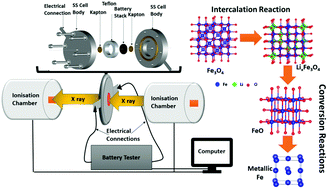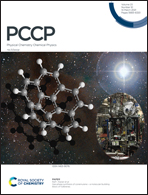Insight into the charging–discharging of magnetite electrodes: in situ XAS and DFT study†
Abstract
The structural changes of Fe3O4 nanoparticle electrodes in Li ion batteries during charging–discharging cycles have been investigated using in situ X-ray absorption spectroscopy (XAS). Chemometric methods viz., Principal Component Analysis (PCA) and Multivariate Curve Resolution-Alternate Least Square (MCR-ALS) have been used for analysis of the in situ XANES data during the charge–discharge cycle, which help to identify the various species formed during the lithiation–delithiation of Fe3O4. The concentration variation of the different species has also been determined and the detailed intercalation–conversion mechanism of the Fe3O4 electrodes during the first discharge has been established. Subsequently, the first charge and second discharge cycles were also studied to apprehend the difference in redox reaction between the first discharge and subsequent cycles. The above studies clearly identify the four species involved in the whole intercalation–conversion process of Fe3O4 electrode of a Li ion battery and also indicate the irreversibility of the conversion reaction in subsequent cycles which may be one of the reasons for capacity fading of these electrodes. The above results have also been corroborated with density functional theory (DFT)based ab inito calculations.



 Please wait while we load your content...
Please wait while we load your content...